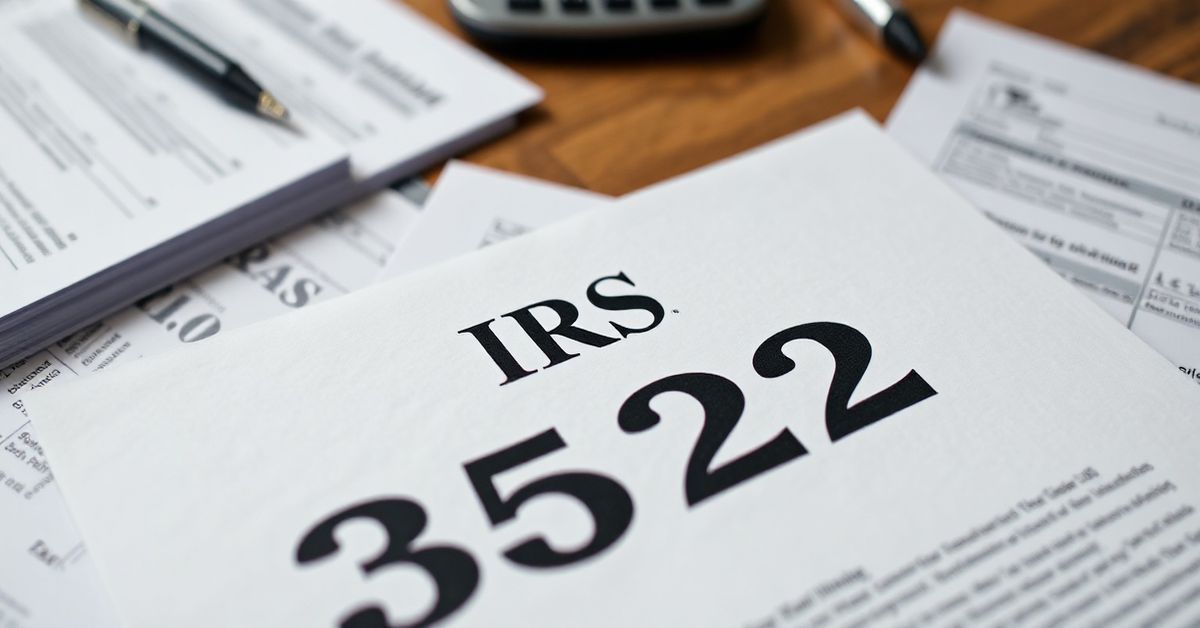Okay, so you got a letter in the mail from the IRS called Letter 3523. Don’t panic! It’s a “Notice of Disallowed Refund Claim.” Let’s break that down into plain English. Essentially, it means you asked for some money back from the IRS, and they’ve said, “Nope, sorry, not this time.”
What’s a Refund Claim, Anyway?
Before we dive deeper into the letter, let’s quickly discuss what a refund claim is. When you file your taxes, sometimes it turns out that you overpaid. This can happen for many reasons, like having too much withheld from your paycheck or qualifying for certain tax credits that reduce your tax bill. When this occurs, you may be due a refund from the IRS.
A “refund claim” is simply when you file a tax return or an amended tax return, asking the IRS to give you back some of that overpaid tax. This is usually done by filing Form 1040-X, Amended U.S. Individual Income Tax Return, but it can also sometimes be a regular return if you simply overpaid.
Why Did the IRS Disallow My Refund Claim?
The IRS doesn’t just randomly deny refund claims. There are various reasons why they might send you a Letter 3523. Here are some common ones:
- Incorrect Information: The most frequent reason is that there’s a mistake on your tax return or refund claim. Maybe you entered the wrong social security number, income amounts, or claimed a credit you weren’t eligible for. If the IRS can’t verify the info, or it simply doesn’t match up with their records, they’ll likely reject the claim.
- Statute of Limitations: There’s a deadline for filing a refund claim, and if you missed it, the IRS will disallow it. Generally, you have three years from when you filed the tax return or two years from when you paid the tax, whichever is later, to file for a refund. This deadline is called the statute of limitations.
- Lack of Documentation: The IRS might require additional documents to support your refund claim, and if you didn’t provide them, they will disallow it. This could include pay stubs, receipts, or other proof of income or expenses.
- Already Received the Refund: It’s rare, but sometimes the IRS might think the claim is incorrect because they believe you have already received the refund. This can happen when there are processing delays.
- Identity Theft/Fraud: If there’s suspected identity theft involved with the return, the IRS may deny the refund claim to investigate further.
- Claiming a Credit or Deduction in Error: You may have filed claiming a credit or deduction incorrectly. There are specific rules for eligibility for each credit or deduction.
Understanding What’s In Letter 3523
The IRS isn’t trying to be mysterious – Letter 3523 should contain some essential information that helps you understand the denial. Here are the important bits to look for:
- Your Name and Taxpayer ID: To make sure it’s definitely for you.
- The Tax Year in Question: So you know what year this is referring to.
- The Refund Amount Claimed: How much money you were asking back.
- The Reason for the Disallowance: The letter will tell you why your refund claim was rejected. This is the most important part!
- Instructions on What to Do Next: The letter will give you steps you can take to try to resolve the problem. This is critical to read carefully!
What Do You Do When You Receive Letter 3523?
Receiving a Letter 3523 can be upsetting, but it’s not the end of the world. Here’s what you should do next:
- Read the Letter Carefully: Don’t just skim it. Pay close attention to the reason for the disallowance, as it’s usually the key to what to do next.
- Gather Your Documents: Find your original tax return, all supporting documentation for your refund claim, and any other related documents. You’ll need these to figure out what went wrong.
- Review Your Return: Go through your return and all of the documentation you have to see if you can identify any errors. Check for typos, miscalculations, or missing documents.
- Contact the IRS: If you don’t understand the reason for the denial, or if you think the IRS made a mistake, you can call the number listed in the letter. Be prepared to explain your situation and provide necessary information. However, patience is key, as getting through to the IRS may take time.
- File an Amended Tax Return (If Necessary): If you identify a mistake on your original tax return, you may need to file an amended tax return using Form 1040-X. When doing so, be sure to address the specific reason the IRS cited in your denial letter, and include all required documentation.
- Appeal the Decision (If Necessary): If you disagree with the IRS’s decision, you may be able to appeal. Letter 3523 should outline how to appeal and any deadlines you must meet. This process usually involves filing a formal appeal with the IRS. This is something that should likely be handled by a qualified tax professional, like an Enrolled Agent, CPA, or tax attorney.
Common Mistakes and Misconceptions
- Ignoring the Letter: This is the worst thing you can do. Ignoring the letter won’t make the problem go away.
- Assuming It’s a Scam: While it’s good to be cautious, if the letter looks like an official IRS notice, it’s most likely real. The IRS will always contact you via mail first and not by phone or email. Check the IRS website to verify if you’re unsure.
- Thinking You Can’t Get Your Refund: Just because your claim was initially disallowed doesn’t mean you’ll never get your refund. Many times, these issues can be resolved by providing additional documentation, clarifying discrepancies, or correcting a mistake on your tax return.
- Delaying Action: The sooner you address the issue, the better. Deadlines do exist, and delaying will make it harder to recover your refund.
Tips and Strategies
- Double-Check Your Work: Always double-check your tax return and supporting documents before filing, especially when claiming a refund. Errors are far easier to fix before filing.
- Keep Detailed Records: Maintain accurate records of your income, expenses, and tax-related information. This helps to ensure accuracy and makes addressing issues like those in Letter 3523 easier.
- Use Tax Software or Seek Help: Consider using tax software or hiring a tax professional to help with tax preparation. They can help you avoid errors, claim all eligible credits, and understand complex tax laws.
- File on Time: Always file your tax return by the due date to avoid penalties and keep on track for filing for a refund within the statute of limitations.
- Respond Promptly: If the IRS requests additional information or has other inquiries, respond promptly and accurately. This may prevent the IRS from rejecting a refund claim or can resolve the denial as efficiently as possible.
Related Terms
- Form 1040-X: Amended U.S. Individual Income Tax Return, used to correct a prior return.
- Statute of Limitations: The time limit for filing a refund claim.
- IRS Notice: An official communication from the IRS.
In summary, a Letter 3523 is an IRS notice that the government agency has disallowed your refund claim. If you receive this letter, it’s essential to carefully review the information, understand the reasons for the disallowance, and take the steps required to resolve it. By acting quickly, thoroughly, and, when needed, seeking professional help, you can increase your chances of getting the refund you’re owed.


 Chinese (Simplified)
Chinese (Simplified) English
English Spanish
Spanish